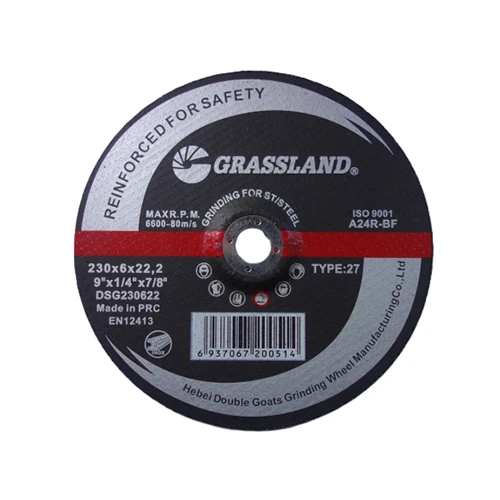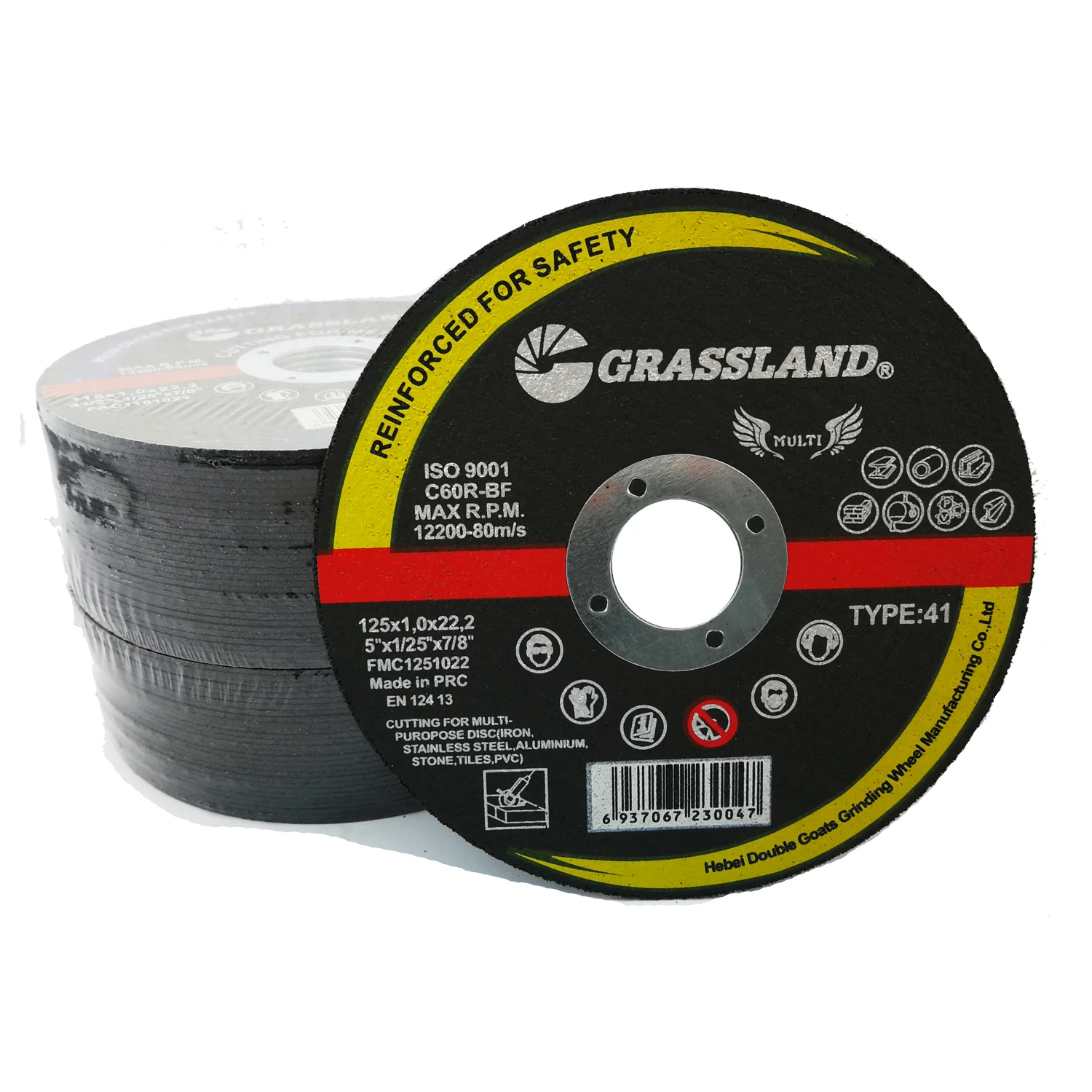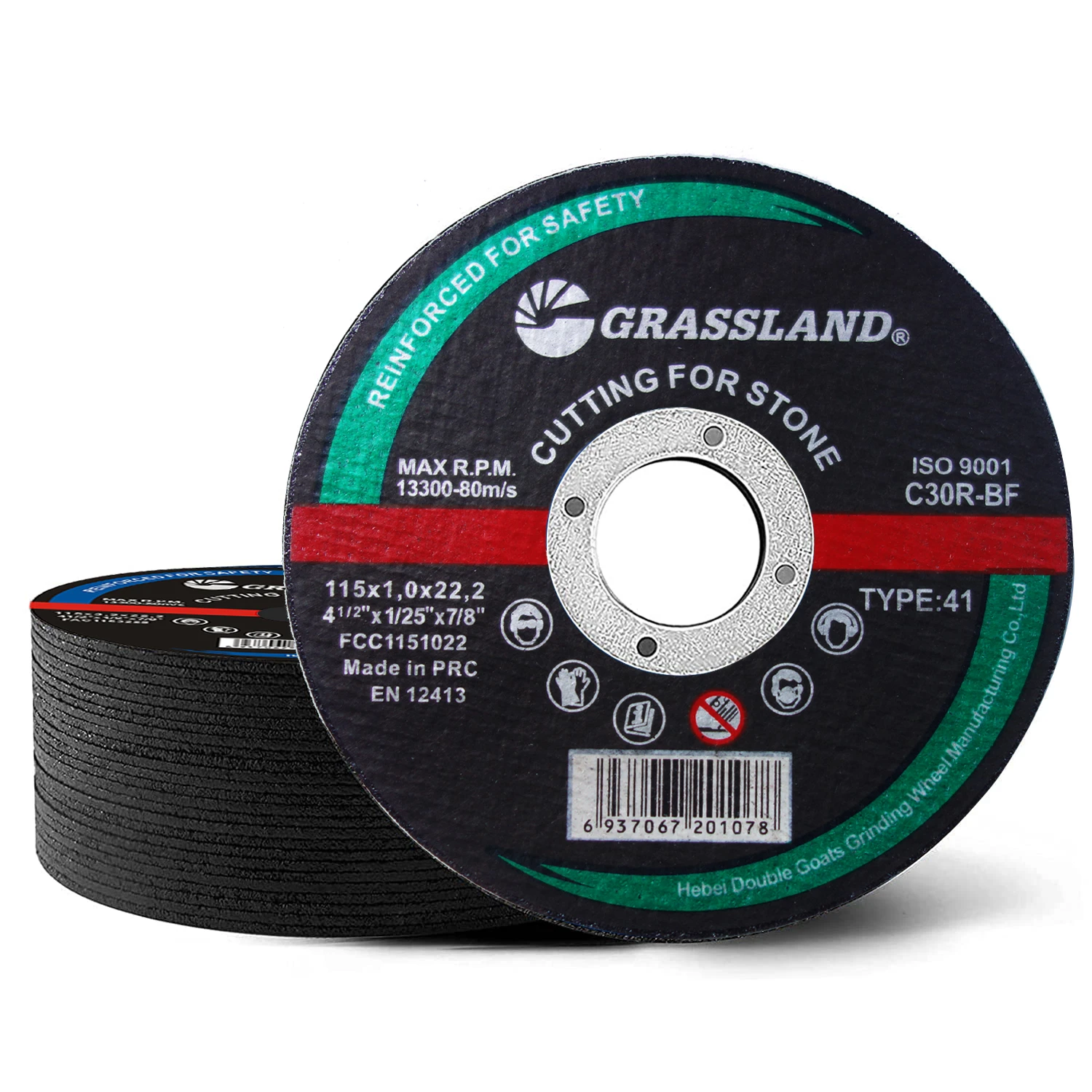What to Know Before You Choose an INOX Grinding Disc (From Someone Who Actually Uses Them)
If you spend your days on stainless steel, you already know the wrong wheel will smear, burn, or flat-out glaze. The right one? It cuts clean, keeps cool, and doesn’t leave you chasing heat tint. I’ve been in and around fab shops long enough to say this with a straight face: the choice of wheel matters more than most people admit. Here’s a closer look at the inox grinding disc that keeps coming up in conversations—GRASSLAND’s 230 mm Type 27—and why it’s getting traction with stainless specialists.

Quick take: why this wheel is different
Designed specifically for stainless, the GRASSLAND 230 mm (9 inch) Type 27 depressed-center wheel uses a low iron/sulfur/chlorine recipe (the usual culprits behind corrosion staining) and a resin bond tuned for cool grinding pressure. Certified by MPA to EN 12413 and backed by ISO 9001 and ISO 14001 systems, it’s built for high-value parts—think 304/316 austenitic stainless, but it holds up on tool steels and gray cast iron too.
Product specs (real-world phrasing, not brochure fluff)
| Model | GRASSLAND 230mm 9" x 1/4" x 7/8" Type 27 |
| Dimensions | 230 × 6.4 × 22.23 mm (9" × 1/4" × 7/8") |
| Grain / Bond | Premium AlOx / Zirconia blend, phenolic resin, 2–3 fiberglass nets |
| Max speed | ≈6,650 RPM (≈80 m/s) |
| Compliance | MPA EN12413; ISO 9001, ISO 14001 |
| Typical use | Stainless (304/316), alloy/tool steels, gray cast iron |
| Performance notes | Low Fe/Cl/S content; cooler cut; reduced glazing on austenitic grades |
How it’s made (and why it holds up)
- Materials: tightly screened AlOx/zirconia grains, low-impurity fillers, multi-layer fiberglass.
- Methods: cold pressing to density targets, controlled resin addition, precision curing, then wheel balancing.
- Testing: burst tests to EN 12413, runout checks, sample destructive grind testing, and traceable QA under ISO 9001.
- Service life: in shop trials, ≈1.2–1.5× longer than a basic AlOx wheel on 304 stainless; removal rate ≈80–140 g/min on 1.6–2.2 kW grinders (your mileage will vary).
Applications? Pipe bevels, weld prep on handrails, structural stainless nodes, and dress-down after MIG/TIG. Many customers say it “stays sharp longer than expected,” which sounds vague, I know, but the feedback repeats across batches.

Vendor snapshot: who’s offering what
| Vendor | Certifications | Grain / Max RPM | Low Fe/Cl/S | Customization | Lead time |
|---|---|---|---|---|---|
| GRASSLAND (Hebei, China) | MPA EN12413; ISO 9001, 14001 | AlOx/Zr; 6,650 RPM | Yes (INOX-safe) | Labeling, spec tuning, packaging | Around 3–5 weeks |
| Generic Import A | EN-stated, lab proof varies | AlOx; 6,600 RPM | Unclear | Limited | 2–6 weeks |
| Premium Brand B | MPA; ISO systems | Zr/ceramic; 6,650 RPM | Yes | Wide (MOQs apply) | Stock-dependent |
Customization and naming the job
You can request grit adjustments, bond hardness tweaks for heavy-pressure or cooler-cut setups, private labels, and stackable packaging. Origin is straightforward: No.88 Economic and Technological Development Zone Shucheng, Hejian, Hebei, P.R. China.
Case notes from the floor
A railings fabricator in the EU swapped in this inox grinding disc for beveling 5 mm 304. Over a two-week run they logged ≈22% fewer wheel changes and a small, but noticeable, drop in blueing on edges. The grinder was 2.2 kW, and average removal rates hovered near 120 g/min. Not a lab miracle—just steady throughput and less fuss, which is what most shops want anyway.
Usage tips (that save you rework)
- Keep contact angles around 15° on flat, bump to ~25° for aggressive stock removal.
- Let the wheel cut—over-pressure heats stainless and shortens life.
- Stick with INOX-safe wheels; cross-contamination from ordinary discs can seed rust.
- Always follow EN 12413 and local safety rules; guards on, flanges clean, and no exceeding rated RPM.
Bottom line? For stainless work where finish and speed both matter, this inox grinding disc checks the boxes: stable cut, less discoloration risk, credible safety pedigree, and realistic lead times.
References
- EN 12413: Safety requirements for bonded abrasive products. MPA certification framework.
- ISO 9001 and ISO 14001: Quality and environmental management systems relevant to abrasive manufacturing.
- ANSI B7.1: Safety requirements for the use, care and protection of abrasive wheels.
- FEPA Standards: Grain sizing and designation for bonded abrasives (informational for grit selection).
Post time:Oct - 20 - 2025

















